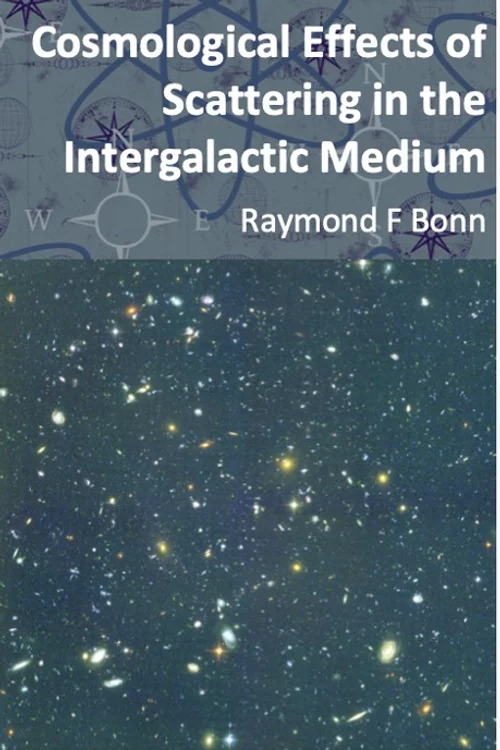
687 pages with 240 figures and a Reader’s Guide
This book is available for free here as a pdf file or a hard copy may be purchased below.
$24.95
Cosmological Effects of Scattering in the Intergalactic Medium
This volume differs considerably from what one might expect of a book whose title announces only that it discusses cosmological effects of a given cause. This is not, as one might have supposed, just a discussion, far less a consensus, of current thinking with regard to that implied topic. It is a comprehensive alternative cosmological model, an original treatise documenting investigations into the nature of the physical processes of dispersion in the intergalactic medium whose profound ramifications manifest themselves in the alteration of observations of objects at cosmological distances. Some background for this alternative is discussed elsewhere on this site under the topic Cosmological Inferences.
No doubt because of the dearth of material in intergalactic space and a prolonged lack of understanding of what little there is, more subtle aspects of what might otherwise be very mundane processes of dispersion in a scattering medium have not previously been investigated to any depth. Nor, therefore, has it been acknowledged as significant to our view of remote regions of our universe. As the reader will learn, this lack of understanding of its contribution to observation processes has resulted in a totally inaccurate perception of what is observed at cosmological distances and of the universe as a whole. The aim of this book is to correct that deficiency. The basic ideas were all summarised in chapter 4 of the novel Cosmological Considerations that is separately available on the site here.
The effects of forward scattering in high temperature plasma has been to produce a distance-redshift relation characterized by Hubble’s constant. The ramifications of Edwin Hubble’s discovery of a distance-redshift relationship are discussed separately on this site here. How this relationship manifests itself as an ‘averaged’ cosmological redshift despite intense redshift ripples and ‘fingers of god’ phenomena is discussed elsewhere on this site. The ‘anomalous’ supernova luminosity phenomena is not anomalous for this scattering model. There is a very slight luminosity reduction due to broadband absorption in a plasma medium, which in addition to the inverse square relationship accommodates full agreement with observed data without an accelerating universe. The nucleosynthesis of helium from hydrogenous plasma that occurs in extreme situations such as gamma ray bursts that release radiation energy is thermalized to the average temperature of the intergalactic medium. The resulting thermal radiation of the medium itself becomes background radiation that is redshifted in passing through the vast distances of a stationary state universe, eventually becoming the 2.728 K CMB that is observed. The energy density in this CMB is precisely the energy of conversion of 23% by mass of the hydrogenous mass density of the universe.
Together the effects of scattering account for all of the major ‘cosmological’ effects without necessitating a big bang, cosmic inflation, dark matter, or dark energy that continue to deflect the attention of standard cosmological models. The author’s scattering model restores the cosmological principle to its proper role in cosmology where its significance has been ignored for far too long.